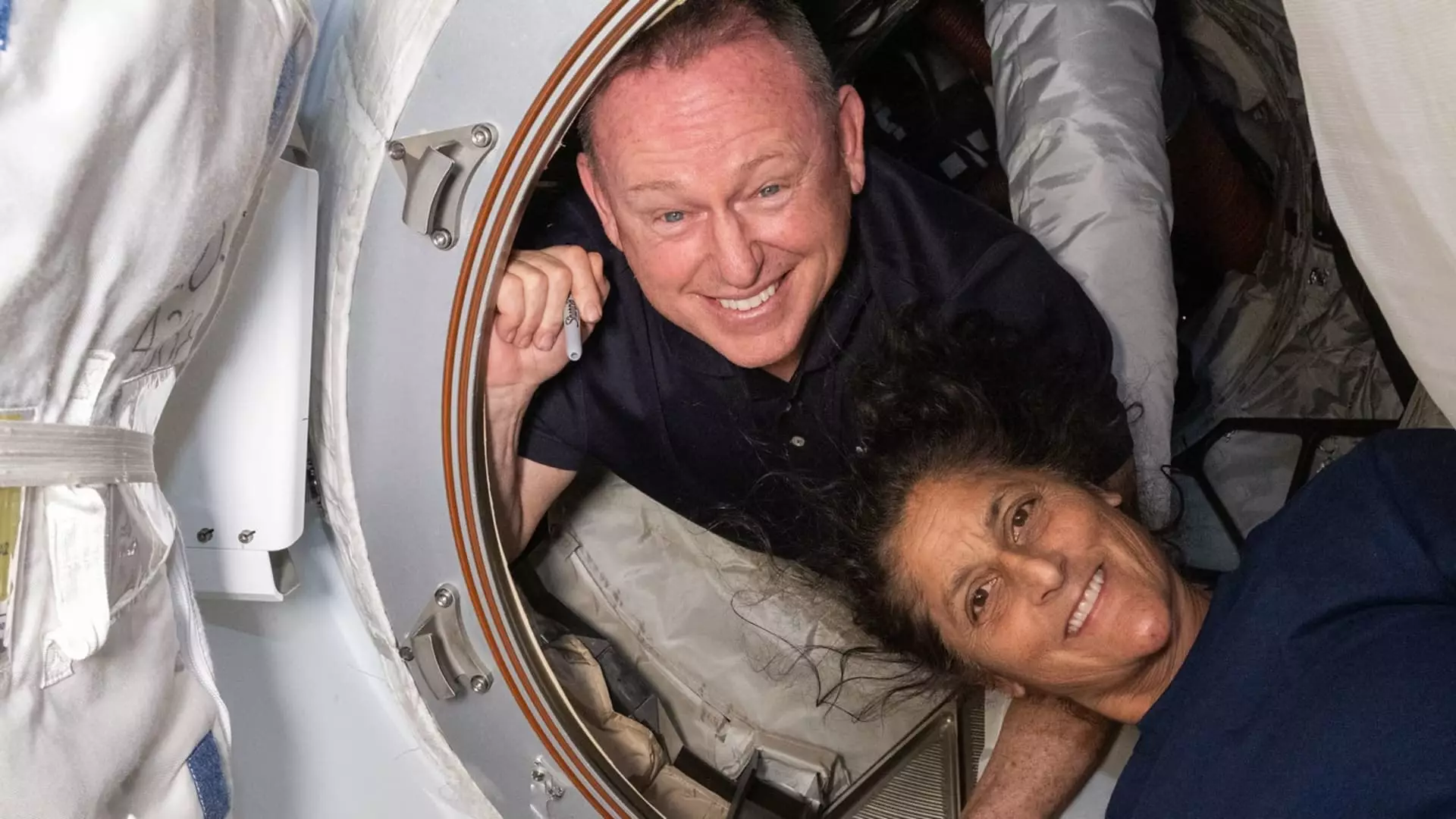NASA’s decision to extend the stay of astronauts Butch Wilmore and Suni Williams aboard the International Space Station (ISS) for an unplanned nine-month adventure underscores the unpredictable challenges of space exploration. Originally, the astronauts embarked on a test flight aboard Boeing’s Starliner capsule, expected to last only nine days. However, a series of technical failures with the spacecraft forced NASA to rethink its plans. These delays raise pertinent questions about the reliability of private contractors in astronaut transportation and the implications of commercial partnerships for space agencies. In an age where technology promises rapid advancements, instances of such unexpected extensions remind us that our reach often exceeds our grasp.
The extended mission turned from a thrilling experience into a complex study of human endurance and adaptability in a closed environment. While Wilmore and Williams were engaged in scientific research during their stay—maintaining the operational integrity of the ISS—the disruption to their initial plans highlights how adaptable astronauts must be. The essence of space travel lies not just in reaching beyond our terrestrial confines but in managing the emotional and psychological toll it takes on those venturing into the unknown.
The Starliner Saga: Boeing’s Dilemma
The fiasco of the Starliner capsule serves as a cautionary tale in the domain of commercial space travel. Boeing, having lost over $2 billion on the project, now finds itself in a precarious position, with doubts lingering about its future crewed spaceflight initiatives. It was meant to be Boeing’s crowning achievement, a demonstration of the capability to rival SpaceX’s robust market presence. Instead, the company’s missteps have left it struggling to justify its role in a partnership that NASA hoped would transform space travel into a more competitive arena.
Boeing’s troubles raise concerns about the implications of relying on private companies for human spaceflight. This reliance on corporate entities may accelerate innovation, but it might also invite the risks associated with profit motives overshadowing safety protocols. As we watch the evolution of the aerospace industry, one must wonder: can a balance be struck between competition and the safety of the astronauts who spend their lives high above Earth? For now, that balance appears precarious indeed.
The Role of Politics in Space Exploration
The political backdrop surrounding Wilmore and Williams’ extended stay adds yet another layer of complexity. During their time in space, their situation became a political football, especially as President Trump leaned on public sentiment to portray the astronauts as “stranded.” Such rhetoric not only misrepresented the reality of their situation but also muddied the waters, as it intertwined the very fabric of space exploration with divisive political discourse. Can we truly consider space a realm free from Earthly politics, or is it forever tainted by the agendas of those in power?
This incident reveals how political narratives can potentially compromise scientific endeavors. As NASA navigates the intricacies of public perception and political pressure, the agency must remain focused on its core mission: advancing knowledge and human presence in space. The politicization of events in space exploration not only risks misinforming the public but can also hinder progress by placing unnecessary pressure on the scientists and astronauts involved.
The Human Element of Space Missions
Amidst the chaos and uncertainty, the human element remains ever-present. Both Wilmore and Williams have spoken positively about their time on the ISS, emphasizing they do not feel abandoned but rather enriched by the experience. Their commitment to scientific research, even in the face of adversity, portrays an inspiring image of resilience. Yet one must reflect: how many of their peers might harbor secret frustrations with the inaccessibility and uncertainty of their missions?
Indeed, it is vital to acknowledge that while space agencies like NASA continue to blaze trails in human exploration, the astronauts who participate in these missions deserve unwavering support and advocacy. They are not merely participants in a global spectacle but pioneers charting the course through uncharted territories. Emphasizing their narratives—their sacrifices and challenges—can provide deeper insight into the reality of life beyond our planet, igniting public passion for space exploration that transcends mere fascination.
Wilmore and Williams’ odyssey serves as a touching reminder of humanity’s spirit of exploration, even when faced with unforeseen complications. As they prepare to return home onboard a SpaceX Dragon capsule, the journey they undertook goes beyond the limits of technology; it encapsulates the very essence of what it means to be human in the vast, unyielding cosmos.

Leave a Reply